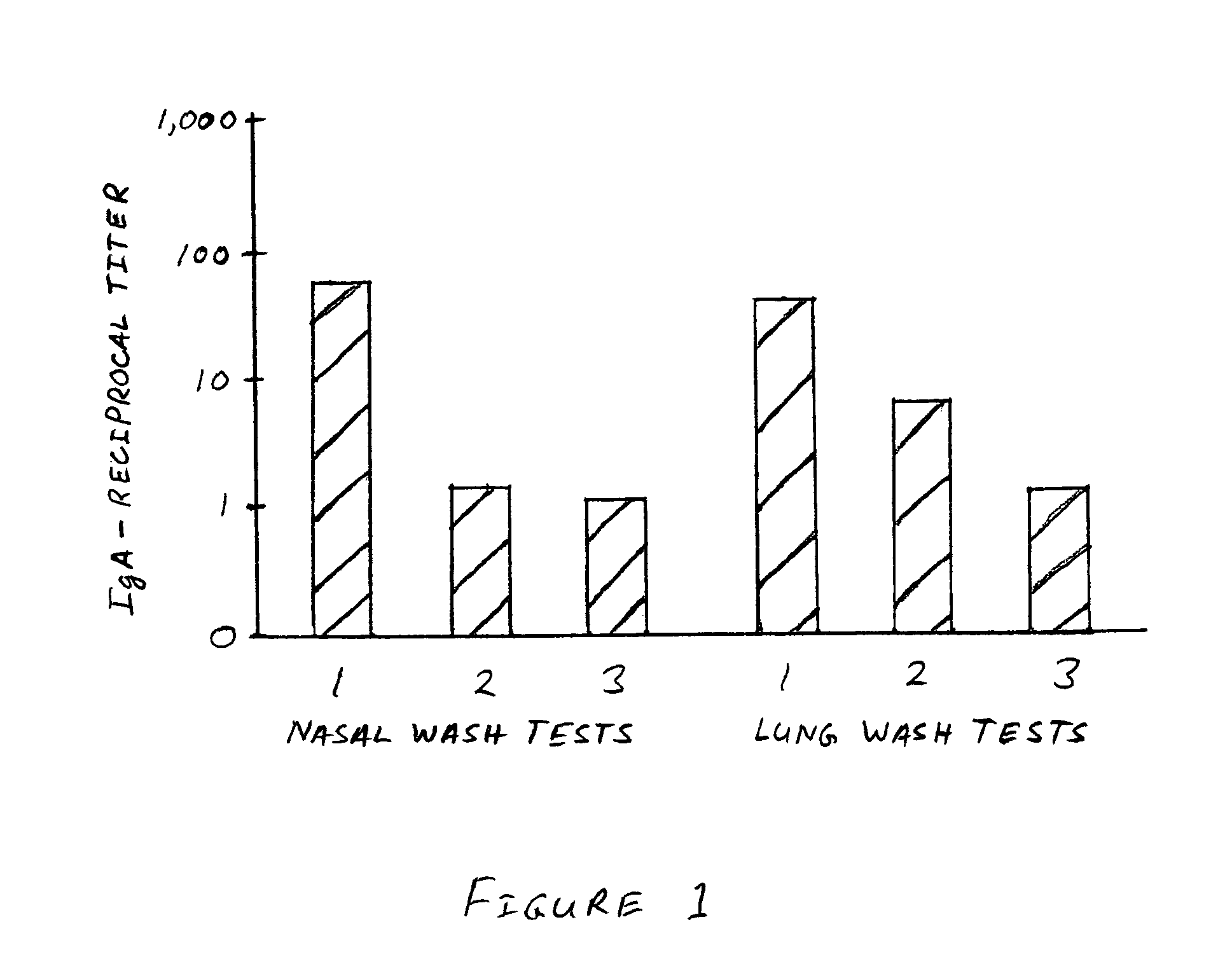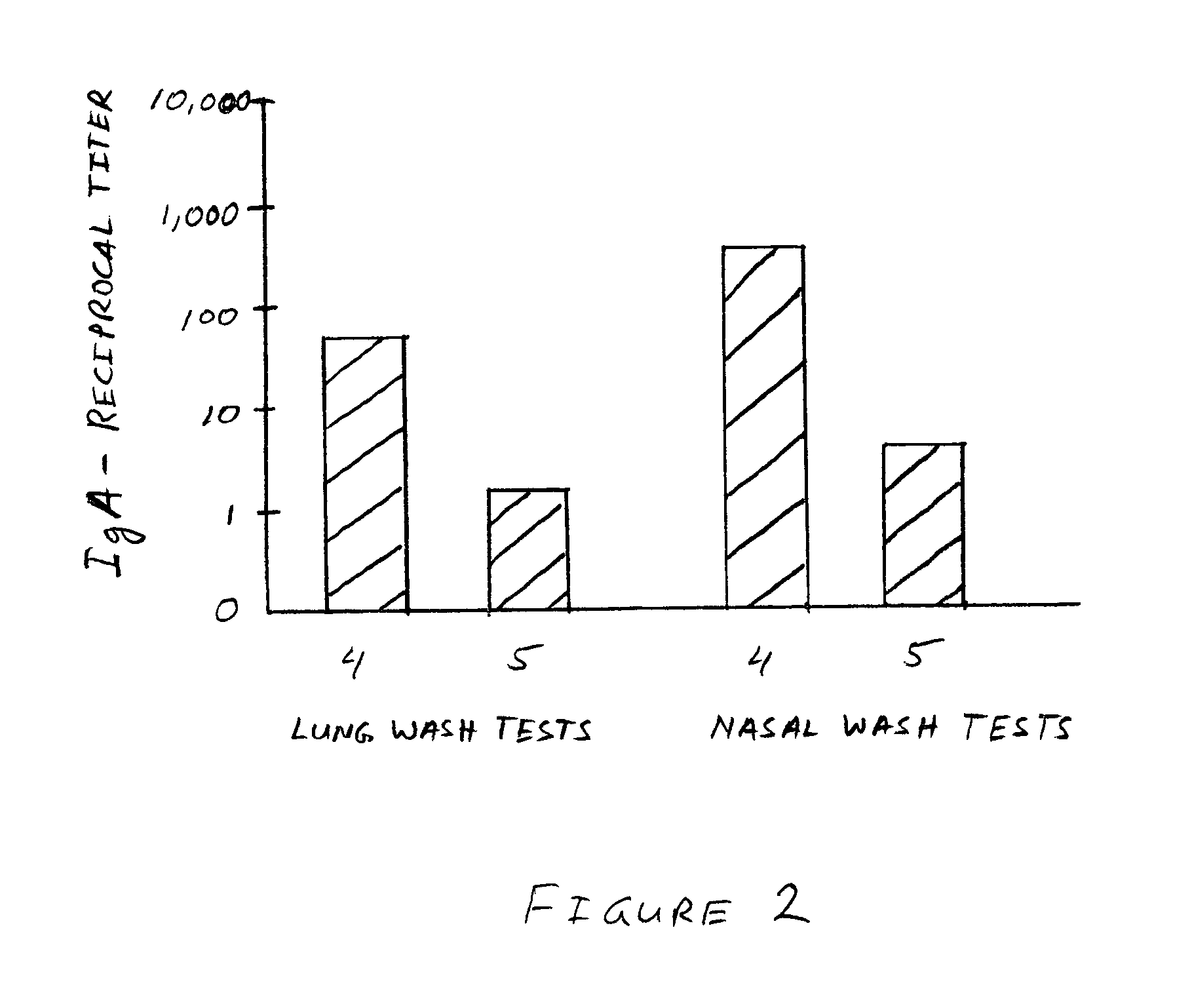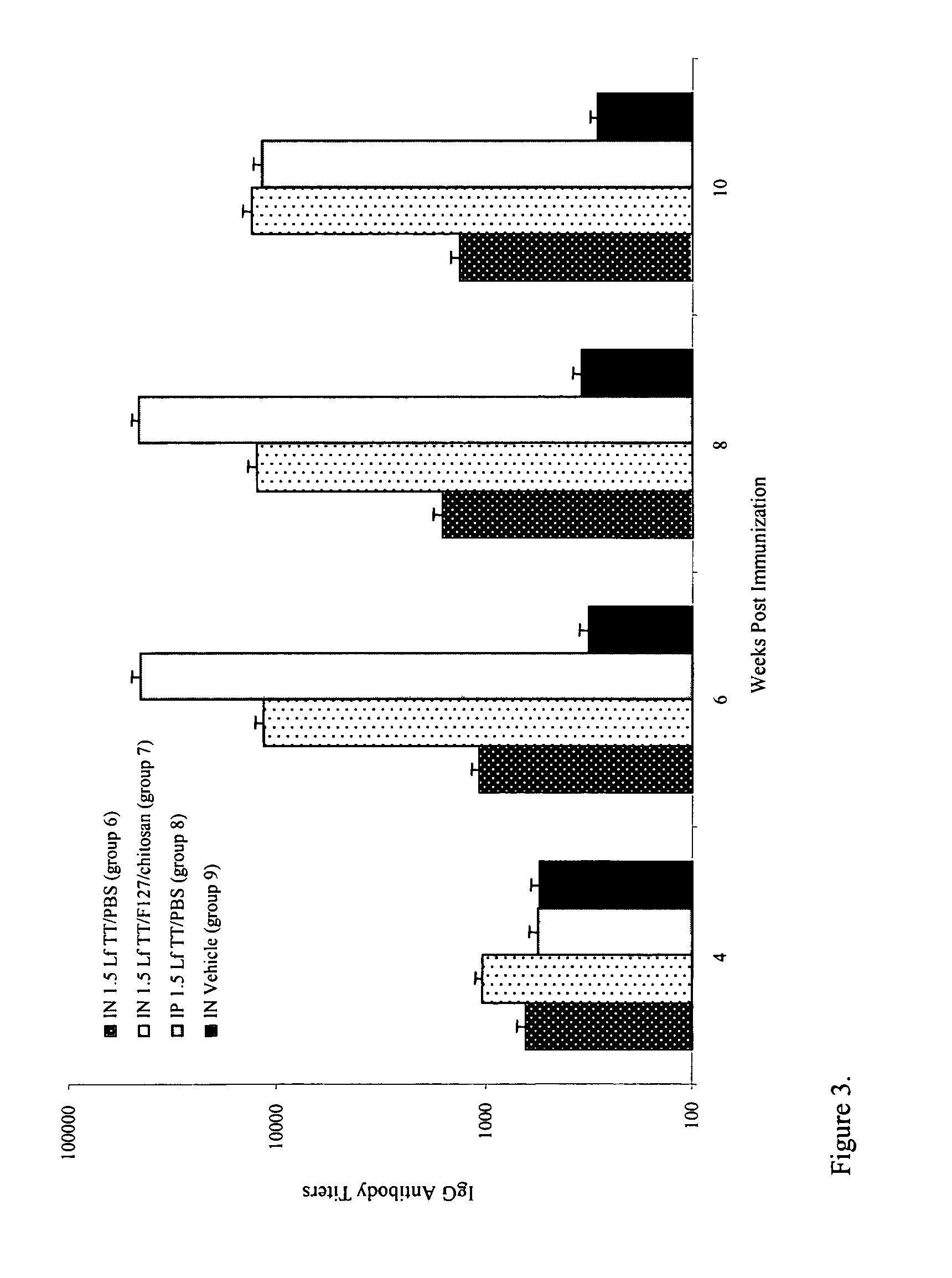Delivery vehicle composition and methods for delivering antigens and other drugs
a technology of delivery vehicle and composition, which is applied in the directions of dispersed delivery, biocide, antibody medical ingredients, etc., can solve the problems of limited use of side effects of many adjuvants used as research tools, inconvenient use, and insufficient compliance in developed countries, so as to increase the viscosity of the composition
- Summary
- Abstract
- Description
- Claims
- Application Information
AI Technical Summary
Benefits of technology
Problems solved by technology
Method used
Image
Examples
example 1
[0091]Preparation of Tetanus Toxoid Formulations. Tetanus Toxoid (TT) solution was obtained (Accurate Chemical, Accurate & Scientific Corp., Westerbury, N.Y.) containing 961 LfTT per mL of solution and 1884 LfTT per mg of protein nitrogen. Pluronic® F127 (BASF, Washington, N.J.) stock solution was prepared at 30 or 34%(w / w) by dissolving the polymer in ice-cold phosphate buffer solution (PBS) with complete dissolution achieved by storing overnight at 4° C. Chitosan (Sigma-Aldrich, St. Louis, Mo., medium molecular weight chitosan) stock solution was prepared at 3% (w / w) in a 0.9% (w / v) saline solution containing 0.1% (v / v) acetic acid and heated overnight at 37° C. to dissolve the chitosan. The stock solutions were then mixed together to prepare formulations containing various combinations of 200 Lf / mL TT, 0.5% (w / w) chitosan, and 16.25% (w / w) Pluronic® F127. These formulations were used to administer a dose of 1.5 Lf of TT per mouse. If the antigen formulation is to be administered ...
example 2
[0097]The methods used in this example were the same as those used in Example 1, except as specifically noted.
[0098]IgA anti-JT antibody responses in lung and nasal washes after i.n. immunization and boost. Balb / c mice were immunized i.n. at week 0 and boosted i.n. at weeks 1 and 3 with 1.5 LfTT in PBS (controls) or 1.5 LfTT formulated with F127 / chitosan. IgA anti-TT antibody levels were measured by ELISA, as described for Example 1, at 4 weeks (i.e. one week after the final boost injection).
[0099]FIG. 2 is a bar graph showing average reciprocal titer IgA anti-TT antibody levels in lung and nasal washes for test conditions using the formulations summarized in Table 2.
[0100]
TABLE 2TT ImmunizationFormulation andTT BoostTT BoostAdministrationForm. / Admin.Form. / Admin.GroupRoute at Week 0Week 1Week 341.5 LfTT / F127 / 1.5 Lf.1.5 Lf.Chitosan, i.n.TT / F127 / Chitosan,TT / F127 / Chitosan,i.n.i.n.51.5 LfTT / PBS1.5 LfTT / PBS1.5 LfTT / PBS(Control), i.n.(Control), i.n.(Control), i.n.
[0101]As shown in FIG. 2...
example 3
[0102]The preparation of tetanus toxoid and immunization of mice used in this example were the same as those used in Example 1, except as specifically noted.
[0103]Measurement of IgG antibody responses in sera. The serum antibody response to TT was measured by ELISA on a weekly basis. Sera was obtained by tail vein bleeding and stored at −20° C. until assay. Wells of 96 well Maxisorb microtiter plates were coated with 100 μl of 1 μg / ml TT in PBS overnight at 4° C. Plates were washed with PBS / 0.05% Tween 20 and blocked with 200 μl of 1 % bovine serum albumin (BSA) (Fisher Scientific) in ultrapure water for 2 hr at 37° C. Serum samples were serially diluted in PBS with 0.1% BSA / 0.05% Tween 20, 50 gl of sample was added per well. Following incubation overnight at 4° C., plates were washed and horseradish peroxidase-labeled anti-mouse IgG γchain-specific antibody conjugate (Southern Biotechnology Associates, Inc.) was added diluted to 1:3000 in PBS with 0.1% BSA and 0.05% Tween 20. The p...
PUM
| Property | Measurement | Unit |
|---|---|---|
| temperature | aaaaa | aaaaa |
| temperature | aaaaa | aaaaa |
| temperature | aaaaa | aaaaa |
Abstract
Description
Claims
Application Information
 Login to View More
Login to View More - R&D
- Intellectual Property
- Life Sciences
- Materials
- Tech Scout
- Unparalleled Data Quality
- Higher Quality Content
- 60% Fewer Hallucinations
Browse by: Latest US Patents, China's latest patents, Technical Efficacy Thesaurus, Application Domain, Technology Topic, Popular Technical Reports.
© 2025 PatSnap. All rights reserved.Legal|Privacy policy|Modern Slavery Act Transparency Statement|Sitemap|About US| Contact US: help@patsnap.com



